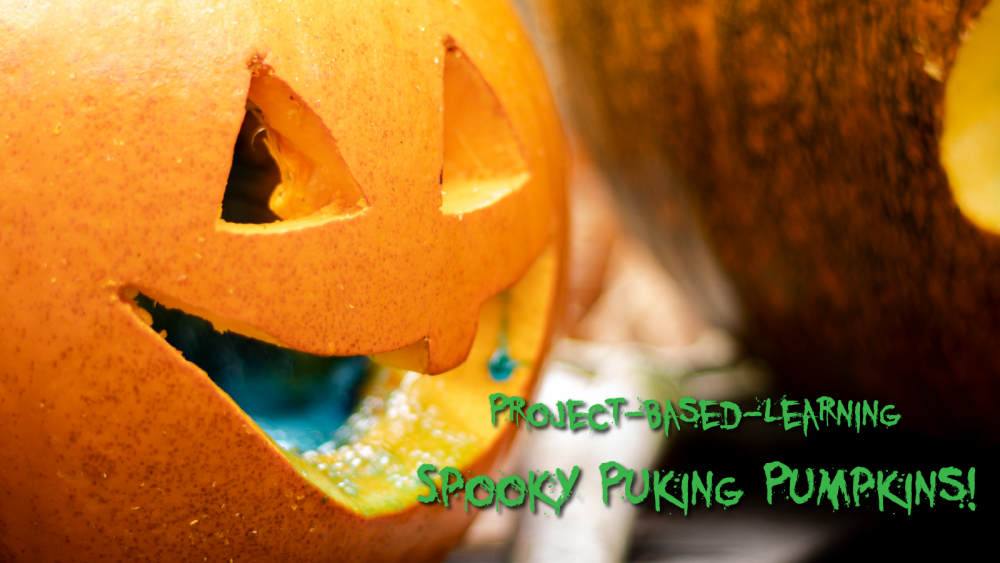The Puking Pumpkin: The Perfect STEAM Project to Celebrate Halloween.
This is a spooky Halloween twist on the classic volcano science project that will delight the young scientists in your life. This time around we are going to use a carved pumpkin as the vessel for our baking soda and vinegar explosion, resulting in a jack-o-lantern that looks like it’s vomiting.
Here are the supplies you’ll need for this project:
- One carved pumpkin
- Baking soda
- Vinegar
- Food coloring
- A mixing vessel
- An outdoor space you don’t mind getting a little messy
Halloween Puking Pumpkin Experiment: Step-by-Step Fun!
- Get Carving!
Start by carving your pumpkin. Cut a hole in the top, then scoop out all the gooey, slimy guts (gross but fun, right?). Now, carve a silly or spooky face on your pumpkin — just make sure it has a big mouth ready for the “puking” action! Tip: Do this project outside, somewhere easy to clean — you’re going to need a hose! - Add the Magic Powder!
With the pumpkin lid off, pour about ½ cup of baking soda inside. Adjust the amount based on how wild you want the eruption to be! - Mix Up the Magic Potion!
In a separate container, mix vinegar with a few drops of orange food coloring (or any color you like — get creative!). We used around 2 cups of vinegar, but you don’t need to be exact. Let your kids play around with the ratios and see what happens! - It’s Eruption Time!
Now, the moment you’ve been waiting for — slowly pour the vinegar into the pumpkin and stand back. Watch as your pumpkin “vomits” foam in an epic eruption! (Warning: Don’t let it overflow before you’re ready!) - Do It Again (and Again)!
Want more fun? Add more vinegar and make your pumpkin puke over and over. The messier, the better — this is science at its messiest (and coolest)!
The Science Behind the “Puking Pumpkin”
In this experiment, we create a “puking pumpkin” or eruption by combining an acid (vinegar) with a base (baking soda) inside a pumpkin. Pumpkins themselves aren’t naturally acidic — you can tell by tasting them or using a pH test. To trigger the eruption, we add vinegar (the acid) and baking soda (the base), which react and create a dramatic eruption.
The formula is simple: Pumpkin + Baking Soda + Vinegar = Puking Pumpkin!
For a more scientific explanation, here’s the chemical reaction:
CH₃COOH (l) + NaHCO₃ (s) → CH₃COONa (aq) + CO₂ (g) + H₂O (l)
- Vinegar (acetic acid) has the formula CH₃COOH.
- Baking soda (sodium bicarbonate) is NaHCO₃.
When combined, they produce sodium acetate (CH₃COONa), along with carbon dioxide (CO₂) and water (H₂O). The carbon dioxide gas causes the bubbling and foaming that make our pumpkin “puke.”
Resources:
- Download the companion worksheet here!
- Looking for more project-based learning ideas? Click here!


